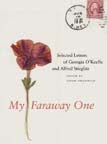 Well okay, this is more of a palazzo tour! Ca'Rezzonico, located on the Grand Canal and designed by the famous Baroque architect Baldassare Longhena, was originally built as the home of Bon family in 1649. In 1741 it was purchased by the Rezzonicos, a wealthy merchant and banking family (who had recently purchased an aristocratic title). They expanded the house, and called upon artists such as Giambattista Crosato, Pietro Visconti, and Giambattista Tiepolo, to create its many magnificent interior decorations. But, by the early 19th century the family had all but died out, and the palazzo was subdivided into several apartments, and many of its contents were sold or dispersed. Interestingly, it was purchased by the artist Pen Browning in the 1880s; and his father, the poet Robert Browning, died there in 1889. After changing hands several times, the palazzo was acquired in 1935 by the city of Venice to house its 18th-century collections.
Well okay, this is more of a palazzo tour! Ca'Rezzonico, located on the Grand Canal and designed by the famous Baroque architect Baldassare Longhena, was originally built as the home of Bon family in 1649. In 1741 it was purchased by the Rezzonicos, a wealthy merchant and banking family (who had recently purchased an aristocratic title). They expanded the house, and called upon artists such as Giambattista Crosato, Pietro Visconti, and Giambattista Tiepolo, to create its many magnificent interior decorations. But, by the early 19th century the family had all but died out, and the palazzo was subdivided into several apartments, and many of its contents were sold or dispersed. Interestingly, it was purchased by the artist Pen Browning in the 1880s; and his father, the poet Robert Browning, died there in 1889. After changing hands several times, the palazzo was acquired in 1935 by the city of Venice to house its 18th-century collections.As the history of these Venetian houses are long and convoluted (they have been rebuilt and restyled extensively over time), rarely do original furnishings exist. While Ca'Rezzonico retains many of its original frescos, a large collection of period paintings and furnishings have been added and are displayed in situ. Included are rooms moved from other houses, the interior of a Venetian pharmacy, and a gallery of some very lovely paintings. Perhaps my favorite rooms are those moved from the Villa di Zianigo, which feature Giandomenico Tiepolo's playful frescoes of 18th-century life and follies.
Unfortunately, photographs were not allowed inside (though I did sneak a few !!), but you can see more here.
 Giandomenico Tiepolo's New World fresco
Giandomenico Tiepolo's New World frescofrom Villa di Zianigo, 1791
 Giandomenico Tiepolo's Pulchinella in Love fresco
Giandomenico Tiepolo's Pulchinella in Love frescofrom Villa di Zianigo, 1797
 The Longhi Room
The Longhi Room 
















1 comment:
Thank you for this post on the ca’rezzonico!
I so admire the creativity and complexity of the European interpretation of their historic interiors – so seldom achieved in American historic house museums that have lost (sacrificed?) their élan . . . KDM
Post a Comment